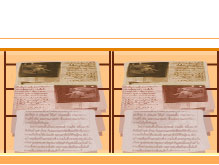For readers
in Basse Normandie at least, the town of Lisieux will need no introduction. It
is the capital of the Pays d’Auge. Its population of around 23,000 makes it the
second largest town in Calvados, behind Caen. The town’s mayor, Bernard Aubril,
is also President of the
Communauté de
Communes de Lisieux Pays d’Auge and Vice-President of the
Conseil Général de Calvados – and, it emerges,
a keen cyclist.
“I competed
until I reached the age of 45,” Mr Aubril says, “and although I no longer take
part in competitions, I still do just as much cycling.”
He briefly summarises
his lifelong connection with Lisieux: “I was born at Le Faulq, a little village
15 kilometres from here. My parents were farm workers. We moved to Lisieux when
I was five and I received all my education here. I became a primary school
teacher; I stayed at my first job at L’Hôtellerie for nine years, and my second
job was at Moyaux where I became headmaster and stayed for 25 years. I was
first elected conseiller municipal in
1983, I have been conseiller général
since 1989, mayor since 2001, and president of the Communauté de Communes since 2003.”
Lisieux’s
economy and agenda is far too diverse to be summed up as neatly, but Mr Aubril
highlights some of the salient points. “Our economic structure benefits from
having around 400 small-to-medium enterprises, the majority of which are run by
businessmen who were born in the Pays d’Auge, studied here, learned their trade
here, in many cases took over from their parents, and have a firm belief in the
future of the Pays d’Auge,” he says. Unemployment in Lisieux never deviates
significantly from the national average. The hospital and the town itself are
the biggest employers. Multinational companies like Nestlé and Knorr Bremse
have sites here; within the CDC,
1,200 small-to-medium businesses employ 12,000 people in food processing,
metalwork and other sectors; there is tourism; there is a strong nucleus of
local shops. Future economic development will be greatly boosted by the extensive
enterprise and industrial zones being developed by the Communauté de Communes, Mr Aubril says.
Turning to
civil life, Mr Aubril mentions numerous projects currently on the table at the
town hall. Some are small and some are large-scale, such as demolition-reconstruction
works to replace accommodation built immediately post-war, a
‘residentialisation’ project to improve security and amenities for tenants, a salle multi-activité currently under
construction, and a new crèche scheme.
Lexoviens
enjoy a full calendar of events and exhibitions including concerts,
exhibitions, weekly markets, the prestigious Foussard fencing tournament, chess
tournaments, competitions for the resident with the best window-boxes and best
Christmas lights, an annual Tree Fair, now in its 549th consecutive
year ... and every year, 48 hours after the Tour de France ends at the Champs-Elysées,
some of the competitors come to Lisieux to participate in a cycle race through the
town centre: “In a good year, this event attracts between 25,000 and 30,000
spectators.”
It’s a safe
bet that the Mayor will be amongst them.



